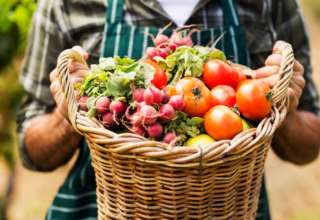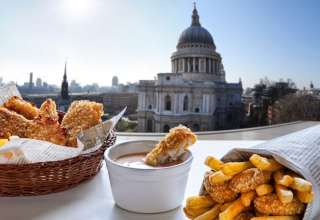From crempog of Wales to injera of Ethiopia, we recommend these eight delicious pancakes from around the globe
Pancake, concocted from a batter made from staple foods like eggs, flour and milk, assumes many forms in different cultures – it can be thin and crispy, round and wobbly, stuffed with savoury meat or served with a generous amount of chocolate spread.
The main ingredients can also be substituted. You can make pancakes with flour ground from wheat, rice, corn, tapioca or even fibre-rich buckwheat. And if you are averse to milk and butter, opt for plant-based ingredients or get back to basics with just water and some vegetable oil; the results are equally delicious.
In countries that have a large population of Christians and Catholics, pancake is mostly associated the Pancake Day. Pancake Day has many names – you can call it Shrove Tuesday in English, Mardi Gras in French, or Fastnachtsdienstag in German – whatever the name, this particular Tuesday before Ash Wednesday (the beginning of Lent) is an excuse for fun and indulgence. Centuries ago, however, Shrove Tuesday was a time for families to use up perishable ingredients before embarking on the Lent fast, and pancake was the dish of choice.
Pancakes are also eaten in other cultures as a side dish, a sweet treat, or even used as a ‘plate’ with other foods placed on top. When making your own pancakes, you can stick to the traditional recipes or draw inspiration from other recipes from all corners of the globe. In this article, we shall aim to tempt you with different pancakes that we like.
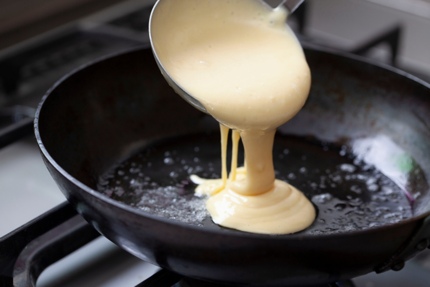
1. Crempog, Wales
Crempog (crempogau in plural) is a Welsh pancake that is more similar to American pancake than the traditional pancake and crepe widely eaten throughout Europe.
Crempog gets its unique taste from warm buttermilk and a good dash of vinegar. Baking soda is also added as a leavening agent, helping to enlarge the air bubbles within the pancake and giving it a fluffy texture.
Historically, families would make a big batch of crempog on a cast-iron bakestone whenever there was a celebration, like on Shrove Tuesday and birthdays. Nowadays, a frying pan works almost as well, and you can also enjoy it all year round.
Follow this link to a good recipe of crempog.
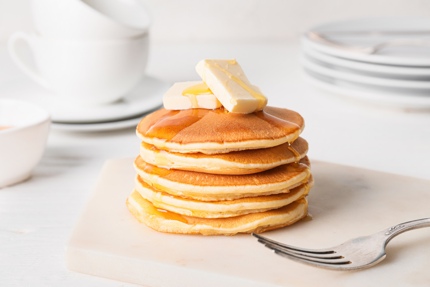
2. Kaiserschmarrn, Austria
A shredded pancake with an intriguing history, Kaiserschmarrn literally means Emperor’s mess, as rumour has it that the original Kaiserschmarrn was the result of a failed attempt at making an omelette. This egg-based error turned out to be a favourite of Emperor Franz Joseph I, the monarch of Austria and the Austro-Hungarian Empire from 1848 to 1916, and its success story continues to this day.
What makes this sweet and fluffy delicacy special is the added rum-socked raisins, which lift the taste to another level. And don’t forget to beat the egg whites and sugar separately – this will increase their volume and allow plenty of air in to help the dish rise.
If you’re keen to give it a go, check out this recipe on wien.info.
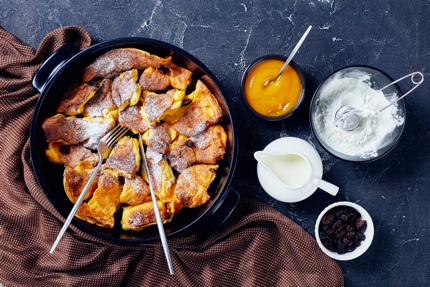
3. Dulce de leche crepe, Argentina
This sugary treat is all about spreading a generous amount of dulce de leche on your crepes.
Dulce de leche is a rich and indulgent syrup made from caramelised milk and sugar. It comes in a tin or a bottle and is used liberally in many desserts, including crepes.
In Argentina, crepes doused in dulce de leche are so popular that you can find them in almost every traditional Argentinean restaurant. Alternatively, you can also make them at home. All you need is to mix eggs, flour and milk together to create a smooth batter first. Then you pour a small ladle of the batter into a pan and quickly swirl it around to form a very thin crepe. Once it is ready, you spread a thick layer of dulce de leche, before folding or rolling it for a picture-perfect dessert.
You can also decorate your crepes with powdered sugar, whipped cream and fresh fruit for extra impact.
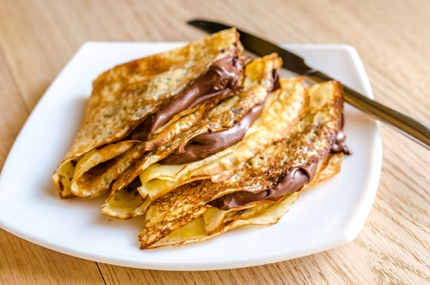
4. Cachapa, Venezuela
Spanish for ‘crumpet’, cachapa is made from corn kernels, cornmeal, eggs, milk and sugar to form a thick batter. Once pan-fried, it becomes crispy on the outside and soft on the inside, while the corn kernels also give it some texture.
Cachapa is often served with queso de mano, a type of soft, white cheese similar to mozzarella. However, you can also serve it with sour cream or salsa.
Arepa is another corn-based pancake – but without sugar nor corn kernels in the batter. Arepa is often used as a base for sandwiches, and you can fill it with spicy beans, shredded meat, or other fillings of your choice.
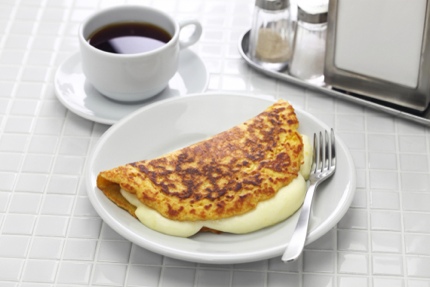
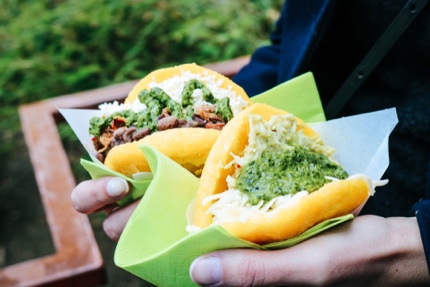
5. Injera, Ethiopia
Soft and spongy, as all good pancakes should be, this crumpet-style sourdough pancake is so popular in Ethiopia that whatever the hour, Ethiopian kitchens will almost always have injera on the go.
Injera is made of teff flour, a gluten-free calcium-and-protein-rich ancient grain that is touted as a superfood in Europe and North America. You can now buy teff flour from Amazon and Red Mill’s whole grain teff flour is the one that we use and recommend.
To make injera, mix the teff flour with water and let it ferment for three days. You then cook the mixture on a clay plate known as a mitad or make do with a non-stick pan or a griddle. The pancake should have a pleasant tangy taste and is delicious when used to mop up spicy Ethiopian stew.
For those who can’t wait for fermentation to take place, a quick version of injera can be found here.
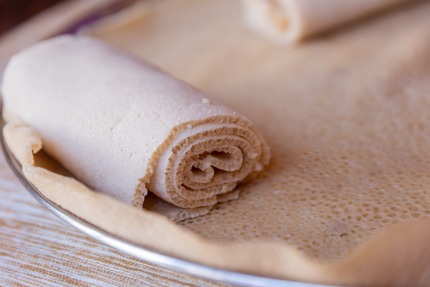
6. Dosa, South India
The South Indian version of a crepe, dosa is made of fermented rice and split urad lentils and laced with fragrant fenugreek seeds and a bit of salt. Dosas are traditionally served hot with a lentil-based vegetable stew, plus a stuffing of potatoes and chutney. Across this vast region, you can probably find over a hundred dosa varieties, including set dosa (spongy dosas), ragi dosa (made with millet), or even one that is infused with Indo-Chinese Schezwan sauce.
While we like the traditional dosas very much, we are partial to karikku dosa, a hugely popular breakfast option in the coastal state of Kerala. Here, soaked rice is drained and mixed with grated coconut, sugar, salt, plus a good measure of coconut water. When the batter hits the pan, the fragrant from the coconut is released and that perfuming smell alone is enough to make your stomach growl.
A good recipe for karikku dosa can be found here.
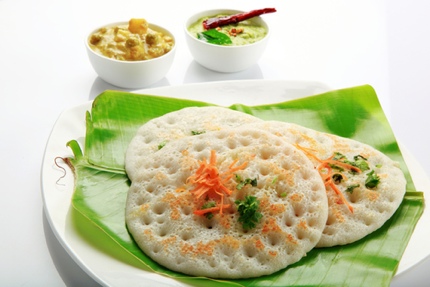
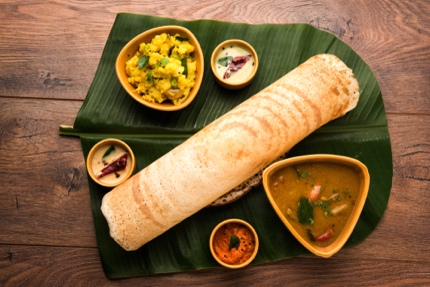
7. Okonomiyaki, Japan
If you’re keen to try a savoury twist on the eggs-flour combination, check out okonomiyaki. The term okonomiyaki is made up of two words – okonomi means “what you want” and yaki means “grilled”. Used together, they mean a pancake “grilled to your liking”.
Apart from eggs and flour, okonomiyaki calls for a generous amount of shredded white cabbage, sliced spring onions, and the goodness of soy sauce and sesame oil. You mix all the ingredients before pan-frying them until crispy and golden-brown.
Okonomiyaki is especially popular in the Kansai region – west-central of Honshu – particularly in Osaka. There are hundreds of okonomiyaki restaurants across Osaka, and almost all of them allow you to choose your toppings, which can be anything from cheese, bacon or oyster to octopus.
We recommend this easy okonomiyaki recipe from the BBC.
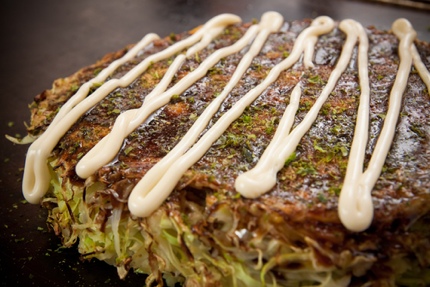
8. Chinese Pancakes
If you’re on a quest for the limitless possibilities of pancake, then China is the destination. Here, you can find a wide variety of pancakes from one region to another.
In Beijing, a city famed for Peking duck, you can easily find paper-thin wheat-flour pancakes that are served alongside the celebrated dish, eaten in accompaniment with hoisin sauce.
In Shanghai, you’ll come across street vendors selling cong you bing (spring onion pancakes). Cong you bing uses flour, water and salt, but has no eggs. Instead, the recipe calls for finely chopped spring onion and toasted sesame oil mixed into the batter before the fragrant concoction is pan-fried to perfection. It’s crispy, flaky, delicious, and above all, vegan.
Moving south to the Fujian province, you’ll find another pancake treat in the form of bo bing – a soft, crepe-like pancake which is used to wrap up vegetables such as bean sprouts and grated carrots.
Then there are pancakes used in a meat sandwich (rou jia bing), filled with shredded radish (luobo si bing), and a sweeter version with red bean paste, just to name a few. Of course, we mustn’t forget to include the plain eggs-and-flour version that is very much like the pancake consumed in the west.
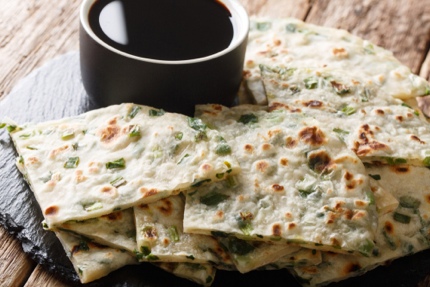
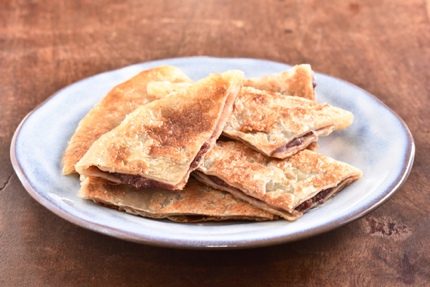
You may also like:
- In search of the perfect restaurant experience
- A guide to Ethiopian food & drink
- The big coffee debate: the world’s best beans
- Italian wine for major occasions
- The complete guide to Bulgarian wine
This article was updated in Feb 2021.



